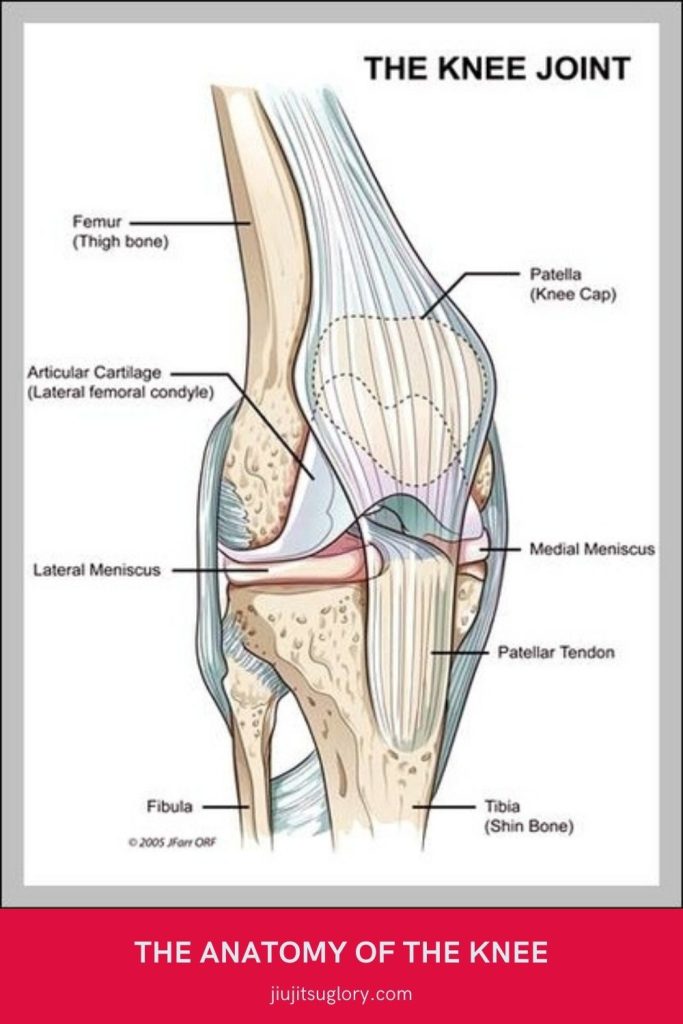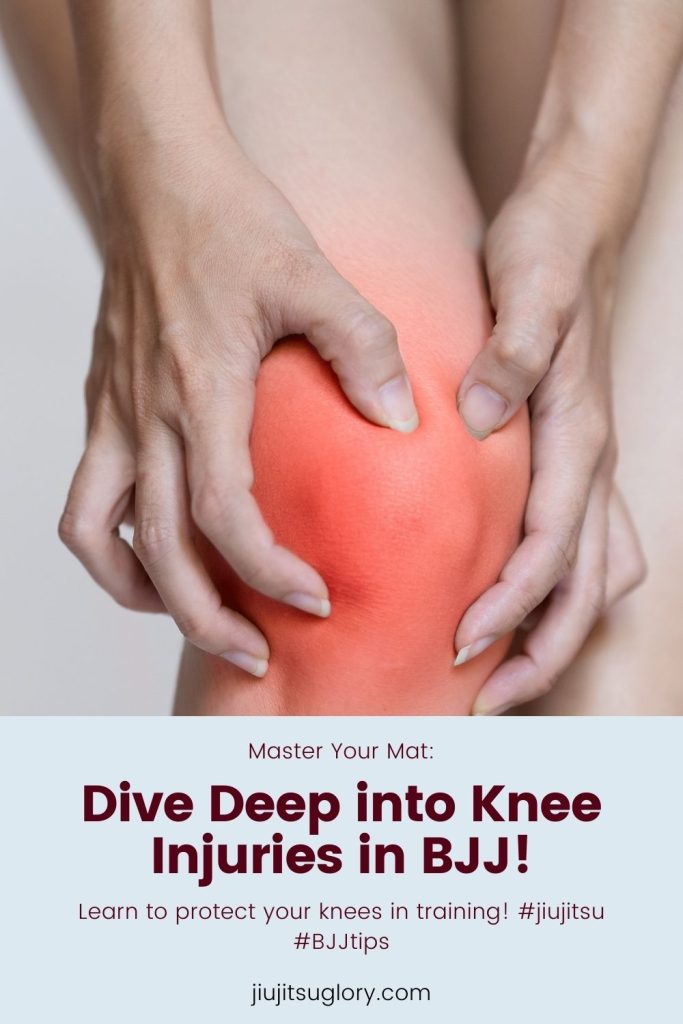Jiu-Jitsu Practitioners rely heavily on knee movement to execute techniques effectively, which increases the risk of knee injuries.
Understanding these injuries is crucial for preventing them and ensuring a long, healthy practice in the sport. Stay tuned for more!
The Anatomy of the Knee

The knee is one of the body’s largest and most complex joints, comprising bones, ligaments, tendons, and cartilage.
The femur (thigh bone), tibia (shin bone), and patella (knee cap) meet to form this joint.
Ligaments like the ACL (Anterior Cruciate Ligament) and MCL (Medial Collateral Ligament) provide stability, while the meniscus acts as a cushion, absorbing shock and enhancing mobility.
Understanding these parts helps recognize how injuries can impact training and recovery.
Common Knee Injuries in Jiu-Jitsu

Brazilian Jiu-Jitsu exposes practitioners to various knee injuries due to the dynamic and often unpredictable movements involved.
Here’s a closer look at the most prevalent types:
Meniscus Tears
The meniscus acts as a shock absorber between the thigh and shin bones.
Injuries to this cartilage often occur during twisting movements or when the knee is bent and then forcefully straightened, such as when trying to escape a tight guard or during aggressive take-downs.
Symptoms include a popping sensation, swelling, and pain while bending the knee.
Ligament Injuries
- ACL (Anterior Cruciate Ligament) Injuries: One of the most severe knee injuries. It often occurs when the knee pivots suddenly while the foot is planted, a common scenario during rapid direction changes in sparring. An ACL tear is accompanied by immediate severe pain, swelling, and a feeling of instability.
- MCL (Medial Collateral Ligament) and LCL (Lateral Collateral Ligament) Sprains: These injuries typically result from a direct blow to the outside of the knee, which can happen during side control or when legs entangle awkwardly. Symptoms include pain at the sides of the knee, stiffness, and, in severe cases, a feeling that the knee may give way.
Patellar Injuries
- Patellofemoral Pain Syndrome (PFPS): Often called “runner’s knee,” PFPS can occur in BJJ from repetitive motion or high stress placed on the patella, like during kneeling or intense forward driving movements. It manifests as pain in the front of the knee, especially when sitting with bent knees, climbing stairs, or kneeling.
- Bursitis involves inflammation of the bursae, tiny fluid-filled sacs cushion the knee joint. In jiu-jitsu, bursitis may develop from repeated falls or constant friction on the mat, leading to pain, swelling, and limited movement.
Injury Mechanisms in Jiu-Jitsu

Knee injuries often result from high-impact movements typical in jiu-jitsu.
For example, guard retention involves a lot of leg movement under resistance, which can strain the knee.
Leg locks, a popular submission technique, can twist or hyperextend the knee, leading to potential ligament damage.
Preventive Measures
Prevention is critical in avoiding knee injuries.
- Adequate warm-ups increase muscle blood flow, reducing the risk of tears.
- Strengthening exercises, like squats and lunges, build muscle around the knee, providing better support.
- Practicing proper techniques also minimizes unnecessary strain on the knees.
Treatment and Rehabilitation
Immediate treatment for knee injuries usually involves the RICE method: Rest, Ice, Compression, and Elevation.
Consulting a healthcare professional is crucial for a proper diagnosis and treatment plan.
Rehabilitation often includes physical therapy focusing on gradually regaining strength and mobility.
Returning to the Mat After Injury

Returning to jiu-jitsu training after a knee injury should be gradual.
It is advisable to start with light drills and avoid high-impact techniques initially.
As recovery progresses, slowly reintroducing more complex moves can help prevent re-injury.
Conclusion
Knee injuries in Brazilian Jiu-Jitsu are common but largely preventable with proper care and training adjustments.
Understanding the risks and preventive strategies can help practitioners enjoy a safer, longer BJJ career.



